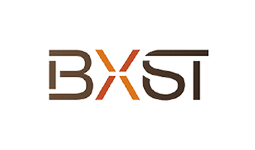The history of regulated power supplies can be traced back to the 19th century. When Edison invented electric lights, he had considered regulators. By the beginning of the twentieth century, there were ferromagnetic regulators and corresponding technical literature. The tube DC voltage regulator was designed. In the late 1940s, the electronic device was combined with the magnetic saturation component to form an electronically controlled magnetic saturation AC voltage regulator. The birth of the transistor in the fifties made the transistor series-regulated and regulated power supply the center of the DC regulated power supply. In the late 1960s, researchers made a new summary of stable power supply technology, which enabled the rapid development of switching power supplies and thyristor power supplies. At the same time, integrated voltage regulators continued to develop. Until today, in the field of DC stabilized power supply, the power supply voltage represented by electronic computer is low, and the power supply with large current is mostly operated by switching power supply. The power supply voltage is required, and the power supply of the device with large current is replaced by the thyristor power supply. Low current, low voltage power supplies use an integrated voltage regulator.
In the field of AC regulated power supplies, two types of technologies, ferromagnetic resonance and electronic feedback regulation, are also constantly evolving. The development of ferromagnetic resonance is as follows: 1950s: magnetic saturation regulator → the 1960s and 1970s: magnetic bleed-type constant voltage transformer (CVT) → mid-eighties: using magnetic compensation The first generation of parametric voltage regulators → mid-1990s: the second generation of parametric voltage regulators → early 20th century: the third generation of parametric voltage regulators. The development process of electronic feedback regulation is as follows: 1950s: Electron tube regulated magnetic amplification (614) type AC voltage regulator → 60s and 70s: electronically regulated auto-coupled sliding (SVC) AC voltage regulator , Automatic Inductive Regulators → Mid-1980s: Electronically regulated contact-compensated AC voltage regulators, sinusoidal energy splitter-type purification power supply → Mid-1990s: CNC-level non-contact compensation AC Regulator, improved 2nd and 3rd generation purification power supply → early 21st century: stepless, non-contact compensation AC voltage regulator with inverter for compensation, new type of purification power supply.
Second, the technical terminology of the regulated power supply
1. Power supply ----- refers to the power supply, usually the power is obtained from the grid power supply, and then the changed form of power is supplied to one or several load devices.
2. Stable power supply ----- output one or several stable power supply devices.
3. Regulated power supply ----- Power supply device with output voltage as stable output.
4. AC stabilized power supply ----- A stable power supply device with AC output voltage as stable output.
5, anti-interference AC power supply ----- an AC voltage stable power supply device with anti-interference ability.
For other relevant technical terms, please refer to the original electronic industry standard SJ/T10541-94 "General technical requirements for anti-interference AC power supply" and the iron tower enterprise standard Q/DPK011-1999 "CWY AC parameter regulator".
6. What is a parameter regulator? The parameter voltage regulator is a power supply device that uses the ferromagnetic equivalent parameter oscillation and synchronous tracking compensation principle to obtain a stable AC output voltage and good two-way anti-interference performance.
Third, the relevant industry standards for AC regulated power supply
At present, there are no national standards. The main industry standards are as follows: 1. The original Ministry of Electronics Industry issued the standard SJ/T10541-94 "General technical requirements for anti-interference AC power supply" and SJ/T10542-94 "Anti-interference AC power supply Test Method", 2, the original Ministry of Machinery Industry Standard JB/T7620-1994 "Compensated AC Voltage Regulator", ZBN250001-87 - "Magnetic Amplified Electronic AC Voltage Regulator".
Fourth, the classification of the regulated power supply and its basic principles and performance characteristics are
summarized as follows:
(1) The comprehensive technology has the best performance. Because it does not use electronic devices, it has the highest environmental adaptability and stable reliability, and can be regarded as a semi-permanent device. At present, most of the power grids have sufficient capacity, so the voltage is relatively stable. However, with the improvement of electrification and informationization levels, local power grid pollution and interference are more serious. Therefore, how to judge whether a regulator is good or bad, whether it has good short-term dynamic stability and instantaneous anti-interference performance is the main indicator to measure the quality and value of the regulated power supply . The working principle of Stabilization is relatively advanced. It is smart and integrated to solve the technical performance of dynamic, voltage regulation and anti-interference. It is much higher than other types of regulated power supply. . Especially the dynamic and anti-interference performance is unmatched by other types of regulated power supplies.
(2) Stable input and output are completely electrically isolated, providing a solid foundation for excellent anti-interference and impact resistance. Others such as purification power supply, compensating, inductive, digitally controlled voltage regulators, etc. The input and output of the electronically regulated voltage regulator are not isolated, and the load is directly connected to the power grid, so various power pollution on the power grid will be inevitable. Direct load and damage to the load equipment, the dynamic and anti-jamming performance of this type of power supply is simply unreliable without additional isolation and anti-jamming devices.
(3) For the performance characteristics and technical indicators of the stabilization, please refer to the relevant contents of the iron product manual.
All in all, Stabilization is a product with the best comprehensive technical performance, highest reliability and lowest maintenance cost among various technical types of AC regulated power supplies.
How do Voltage Regulator Stabilizer develop these years?
Date:2019-11-06 10:33:46 click:2967













